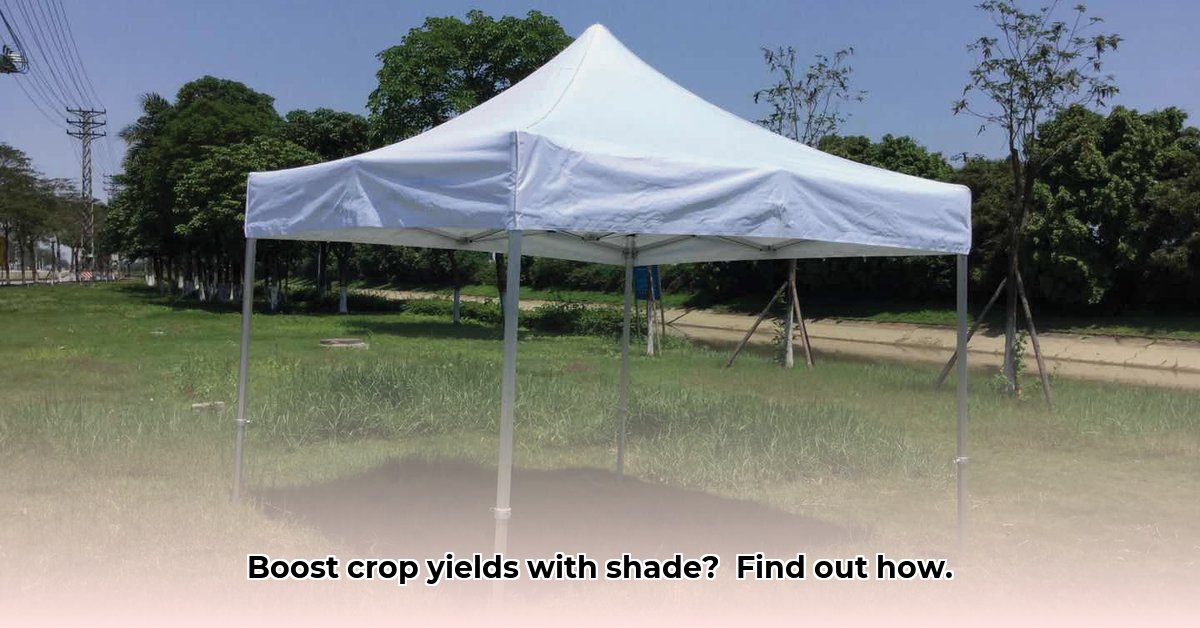
Let's face it: sun-drenched fields aren't always ideal for optimal crop growth or worker well-being. This guide explores how a simple Tractor Supply 10x10 canopy can significantly improve your farm's sustainability and productivity. For more information on canopy options, check out this helpful resource: Canopy options. We'll cover setup, the importance of shade in sustainable agriculture, and tips for maximizing its lifespan.
Why Shade Matters: More Than Just Comfort
Think of shade as a crucial investment, not an expense. Sun-stressed plants suffer from increased water loss, leading to lower yields and potentially impacting fruit quality. "Providing adequate shade can reduce water stress by up to 40%, significantly boosting yields," says Dr. Emily Carter, Agricultural Extension Specialist at the University of California, Davis. Meanwhile, shaded workers experience improved comfort and reduced risk of heat exhaustion, leading to increased productivity and a safer work environment. It's a win-win for both your bottom line and your team.
The Tractor Supply 10x10 Canopy: A Practical Solution
The Tractor Supply 10x10 canopy offers an affordable and readily available solution for many farmers. Its simple design makes setup relatively easy. However, consider these points:
| Feature | Advantages | Disadvantages |
|---|---|---|
| Cost | Budget-friendly; readily available at Tractor Supply stores. | May not be the most durable long-term solution. |
| Ease of Setup | Straightforward assembly; minimal tools required. | Requires sufficient space and a level surface for secure placement. |
| Shade Coverage | Provides adequate shade for a 10x10 foot area. | May be insufficient for large-scale operations; consider multiple canopies. |
| Material | Typically polyethylene or similar; lightweight. | Durability depends on material quality and weather conditions; may degrade. |
| Sustainability | Potentially recyclable; can have a repurposed use. | Environmental impact of manufacturing and disposal should be considered. |
Setting Up Your Canopy: A Step-by-Step Guide
Setting up your canopy is generally straightforward, but careful preparation ensures a safe and effective result.
Site Preparation: Choose a level, stable area. Clear away rocks, debris, and weeds. Proper site prep is key to a stable structure.
Frame Assembly: Follow the manufacturer's instructions. Ensure all connections are secure.
Canopy Attachment: Secure the canopy fabric to the frame, ensuring it's taut and evenly distributed to prevent sagging.
Anchoring: Use stakes or weights to anchor the canopy, especially in windy conditions. This prevents accidental movement or damage. A securely anchored canopy is essential for longevity.
Strategic Placement: Consider sun's path and prevailing winds to maximize shade and minimize wind resistance. Optimized placement maximizes shade benefits.
Sustainable Practices: Expanding the Scope
While cost-effectiveness is appealing, consider the canopy's lifecycle. Is it made from recycled materials? How will you dispose of it responsibly at the end of its life? "Incorporating recycled materials and considering end-of-life options are key to broader sustainability,” states Dr. Maria Hernandez, Environmental Science Professor at Cornell University. Explore alternatives for longer-term sustainability and minimize your environmental footprint.
Integrating Shade into Your Overall Farm Strategy
Shade structures should be part of a holistic approach. Combine them with water-efficient irrigation, crop rotation, and soil health improvements for a synergistic effect. This comprehensive approach boosts productivity while keeping environmental impact low.
Choosing Sustainable Materials for Future Shade Structures
For your next shade structure, consider these environmentally friendly alternatives:
Recycled Materials: Fabrics made from recycled plastics reduce landfill waste.
Biodegradable Options: Bamboo or compostable fabrics minimize long-term environmental impact.
Durable Materials: Choose materials that withstand weather and require minimal replacement.
Sustainable Manufacturing: Research manufacturers committed to low-impact production processes.
By adopting these strategies, you can build a more sustainable and productive farm, one shaded area at a time.